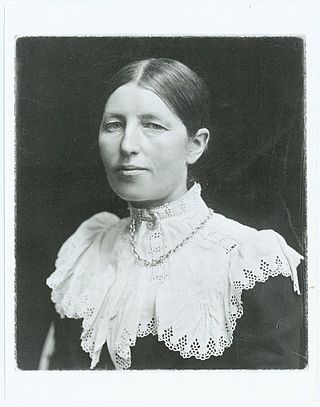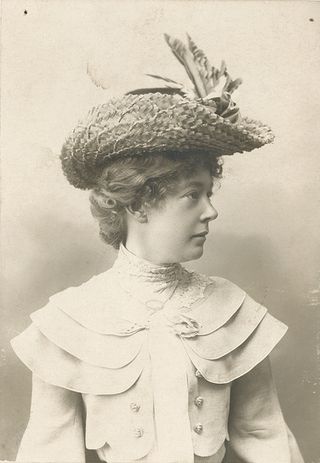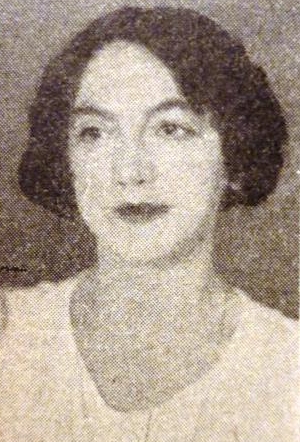
Anna Ancher was a Danish artist associated with the Skagen Painters, an artist colony on the northern point of Jylland, Denmark. She is considered to be one of Denmark's greatest visual artists.

Robert Julius Tommy Jacobsen was a Danish sculptor and painter. The Danish Robert Award is named in his honor.

Ghita Nørby is a Danish actress with 117 film credits to her name from 1956 to 2005, making her one of the most active Danish actresses ever.
John Neumeier is an American ballet dancer, choreographer, and director. He was the Director and Principal Choreographer of Hamburg Ballet from 1973-2024 and the Artistic Director Ballet at Hamburg State Opera from 1996-2024.

Julius Bomholt was a Danish politician representing the Social Democrats.
Kirsten Simone was a Danish ballerina. She studied at the Royal Danish Ballet School with Vera Volkova and joined the Royal Danish Ballet Company in 1952. She became their first soloist in 1966. She created roles in Flemming Flindt's The Three Musketeers (1966), Elsa-Marianne von Rosen's Don Juan (1967) and Harald Lander's Fête polonaise (1970). She was a guest artist with several companies including the American Ballet Theatre and London Festival Ballet. Since her retirement she taught at the Royal Danish Ballet School.

Clara Pontoppidan, also known as Clara Wieth, was a Danish actress. She worked mainly in Swedish and Danish silent films, including A Victim of the Mormons.

Agnes Slott-Møller, née Rambusch, was a Danish Symbolist painter; influenced by the Pre-Raphaelites. She is known for works inspired by Danish history and folklore. Her husband was the painter Harald Slott-Møller.

Peter Ludvig Rudolph Striegler was one of Denmark's early photographers, specialising in portrait photography.

Anna Kirstine Bloch was a Danish actress.
Adam Fischer was a Danish sculptor, an early contributor of works inspired by Cubism.

Bertha Wegmann (1847–1926) was a Danish portrait painter of Swiss ancestry. She was the first woman to hold a chair at the Royal Danish Academy of Fine Arts.

Emilie Ulrich was a Danish soprano who sang leading roles at the Royal Danish Opera from 1894 until her retirement from the stage in 1917.

Nielsine Petersen was a Danish sculptor.

Catharine Elisabeth Simonsen née Ryssländer was a Danish soprano who performed in operas at the Royal Danish Theatre in Copenhagen. In 1843, she was awarded the prestigious title of Royal Chamber Singer by King Christian VIII.

Johanne Amalie Stockmarr (1869–1944) was a Danish pianist who was recognized for her virtuosity in Denmark, Britain, Germany, Sweden and Norway, receiving several awards. One of her most notable concerts was in 1906 in London when she played Grieg's Piano Concerto under the composer's leadership.

Gerda Amalie Holst Christophersen was a Danish stage and film actress, singer, theatre director, and writer. From 1911, she starred in numerous early Danish films, including 15 from Nordisk Film.

Elna Eleonora Fobian Ørnberg, also Elna Jørgen-Jensen, was a Danish ballet dancer and instructor who as a soloist starred in Bournonville's productions at the Royal Danish Theatre from 1907. After receiving further training with Mikhail Fokin, she choreographed the once popular but now forgotten Strauss i Paris in 1932. In 1933, she retired as a dancer but continued as a trainer. As a result of her support of the Nazis under the German occupation in World War II, she was imprisoned for six months. In the late 1940s, she left Denmark together with her husband Leif and settled and taught in Madrid.

Gerda Elisabeth Karstens was a Danish ballet dancer with the Royal Danish Theatre where she became a soloist in 1942. She is remembered in particular for her interpretations of Madge in Bournonville's La Sylphide and the headmistress in David Lichine's Graduation Ball. She performed these two roles during her retirement evening in 1956, after which she spent several years teaching mime.
Ingeborg Nørregaard Hansen (1874–1941) was a Danish operatic soprano who débuted at the Royal Danish Theatre in 1899 as Senta in The Flying Dutchma. In 1901, she was engaged by the company, initially standing in for other singers. Over the years, she developed powerful interpretations of the romantic soprano roles in Wagner's operas, becoming one of the company's leading Wagnerian performers by her retirement in 1926.

















